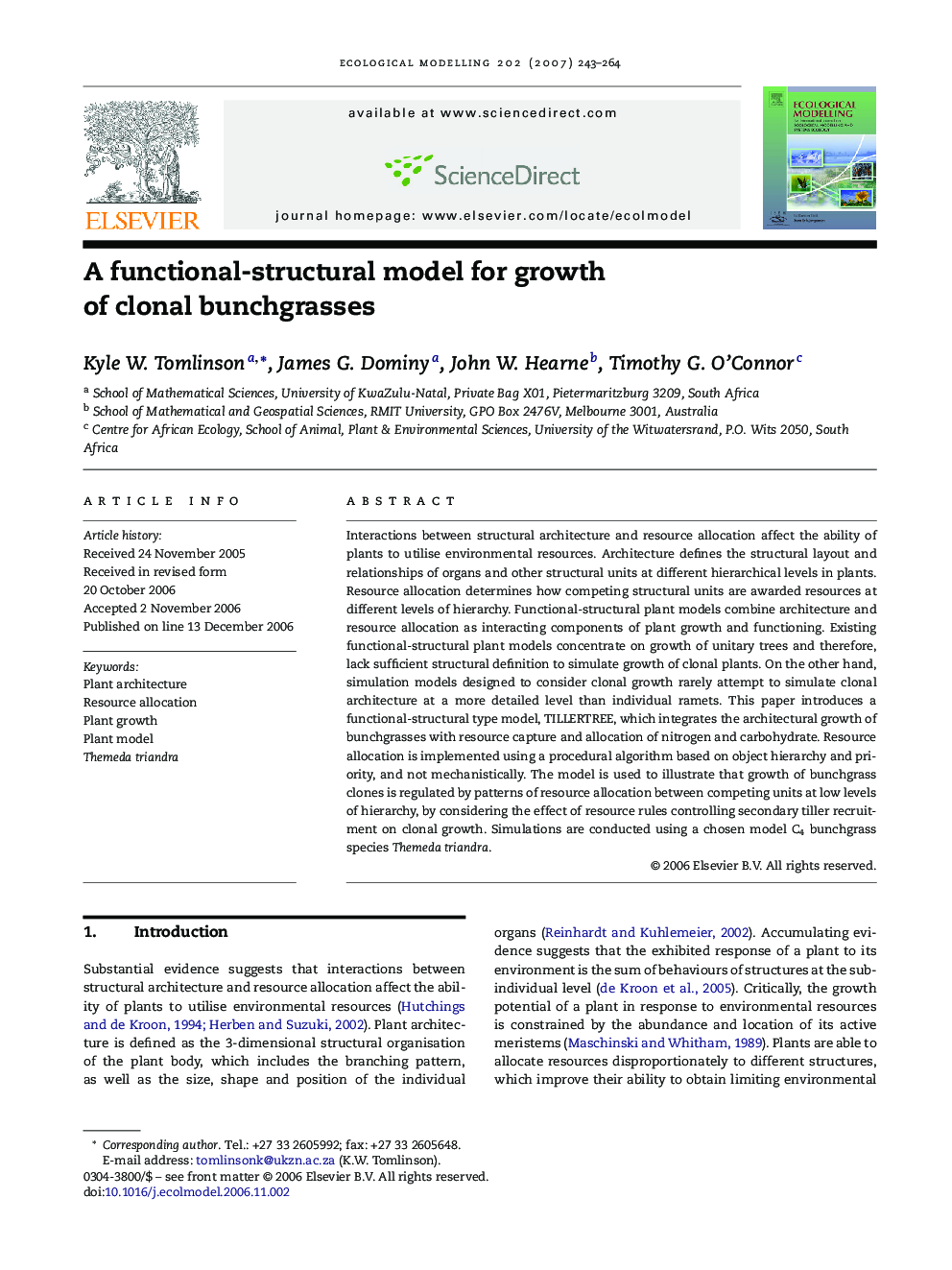| Article ID | Journal | Published Year | Pages | File Type |
|---|---|---|---|---|
| 4378659 | Ecological Modelling | 2007 | 22 Pages |
Abstract
Interactions between structural architecture and resource allocation affect the ability of plants to utilise environmental resources. Architecture defines the structural layout and relationships of organs and other structural units at different hierarchical levels in plants. Resource allocation determines how competing structural units are awarded resources at different levels of hierarchy. Functional-structural plant models combine architecture and resource allocation as interacting components of plant growth and functioning. Existing functional-structural plant models concentrate on growth of unitary trees and therefore, lack sufficient structural definition to simulate growth of clonal plants. On the other hand, simulation models designed to consider clonal growth rarely attempt to simulate clonal architecture at a more detailed level than individual ramets. This paper introduces a functional-structural type model, TILLERTREE, which integrates the architectural growth of bunchgrasses with resource capture and allocation of nitrogen and carbohydrate. Resource allocation is implemented using a procedural algorithm based on object hierarchy and priority, and not mechanistically. The model is used to illustrate that growth of bunchgrass clones is regulated by patterns of resource allocation between competing units at low levels of hierarchy, by considering the effect of resource rules controlling secondary tiller recruitment on clonal growth. Simulations are conducted using a chosen model C4 bunchgrass species Themeda triandra.
Related Topics
Life Sciences
Agricultural and Biological Sciences
Ecology, Evolution, Behavior and Systematics
Authors
Kyle W. Tomlinson, James G. Dominy, John W. Hearne, Timothy G. O'Connor,
